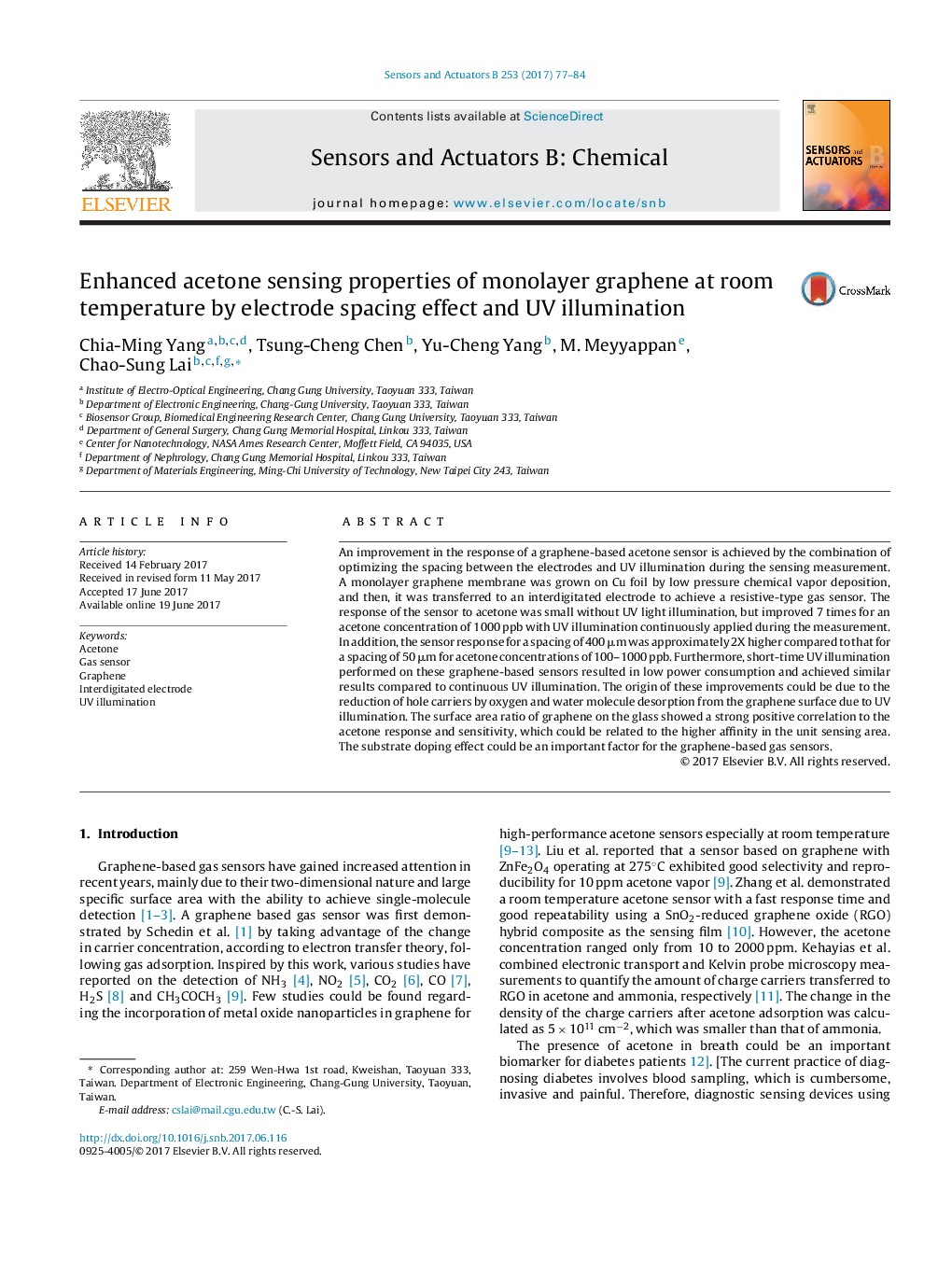| Article ID | Journal | Published Year | Pages | File Type |
|---|---|---|---|---|
| 5008949 | Sensors and Actuators B: Chemical | 2017 | 8 Pages |
Abstract
An improvement in the response of a graphene-based acetone sensor is achieved by the combination of optimizing the spacing between the electrodes and UV illumination during the sensing measurement. A monolayer graphene membrane was grown on Cu foil by low pressure chemical vapor deposition, and then, it was transferred to an interdigitated electrode to achieve a resistive-type gas sensor. The response of the sensor to acetone was small without UV light illumination, but improved 7 times for an acetone concentration of 1000 ppb with UV illumination continuously applied during the measurement. In addition, the sensor response for a spacing of 400 μm was approximately 2X higher compared to that for a spacing of 50 μm for acetone concentrations of 100-1000 ppb. Furthermore, short-time UV illumination performed on these graphene-based sensors resulted in low power consumption and achieved similar results compared to continuous UV illumination. The origin of these improvements could be due to the reduction of hole carriers by oxygen and water molecule desorption from the graphene surface due to UV illumination. The surface area ratio of graphene on the glass showed a strong positive correlation to the acetone response and sensitivity, which could be related to the higher affinity in the unit sensing area. The substrate doping effect could be an important factor for the graphene-based gas sensors.
Related Topics
Physical Sciences and Engineering
Chemistry
Analytical Chemistry
Authors
Chia-Ming Yang, Tsung-Cheng Chen, Yu-Cheng Yang, M. Meyyappan, Chao-Sung Lai,
